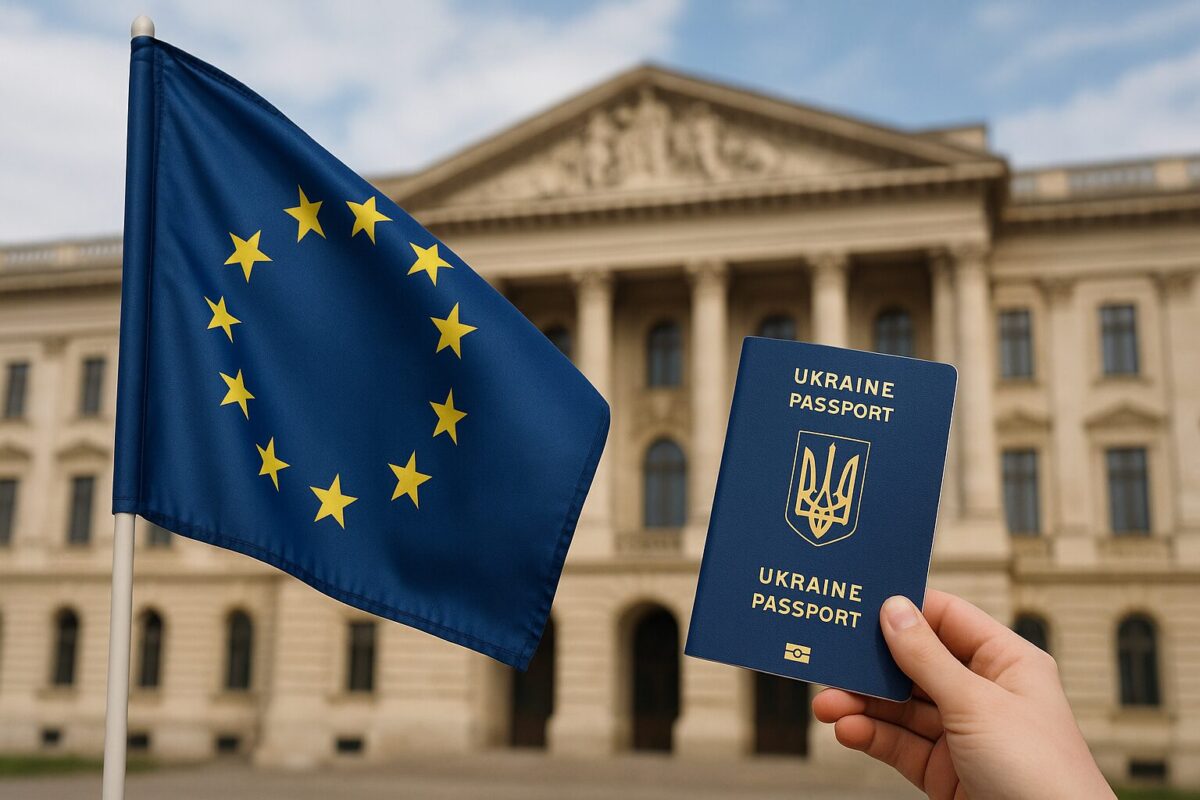
Temporary protection for Ukrainians in the EU extended until 2027
No queues, no new applications, no changes to rights.
On 13 June 2025, the Council of the European Union unanimously agreed to extend temporary protection for Ukrainians fleeing war until 4 March 2027. This decision secures nearly two more years of legal status for millions of displaced Ukrainians in EU countries.
But behind the headlines lies a more nuanced picture. Implementation varies from country to country. And one EU state — Denmark — remains a formal exception.
Let’s break down what was decided in Brussels, how the system works, which countries apply it — and what lies ahead.
What Is Temporary Protection — and Why Was It Extended?
This is not refugee status. It’s a special legal mechanism established under Directive 2001/55/EC, which was activated by the EU for the first time on 4 March 2022 in response to the Russian invasion of Ukraine.
It allows EU states to grant immediate and collective protection without requiring lengthy asylum procedures.
Upon activation, 27 EU countries (except Denmark, explained below) agreed to grant temporary protection to Ukrainians. The status automatically includes:
- the right to reside;
- access to the labour market;
- basic medical care;
- education for children;
- social assistance (varies by country).
Originally valid for one year, the protection was extended repeatedly — now reaching March 2027.
What Exactly Did the EU Decide on 13 June 2025?
The Council decision did not introduce new conditions or restrictions. All Ukrainians who currently hold temporary protection do not need to reapply.
The extension is automatic, meaning:
- no need to visit migration offices again;
- no additional paperwork;
- no new risk assessment required.
However, technical procedures differ across countries. Some issue residence permits valid until 2027; others may require physical renewal of ID cards.
Which EU Countries Apply the Directive — and Who Opted Out?
All 27 EU member states agreed to the extension. But Denmark has a legal exemption (“opt-out”) from the EU’s common migration and asylum policy and does not apply Directive 2001/55/EC.
Full Participants (26 countries):
Including:
- Germany, Poland, France, Italy, Spain;
- Netherlands, Czech Republic, Lithuania, Latvia, Estonia;
- Croatia, Slovenia, Austria, Belgium, Slovakia, Romania, and others.
Special Case — Denmark:
- Denmark is not bound by the directive;
- It implemented a national mechanism granting similar rights to Ukrainians;
- Conditions are comparable: residency, employment, access to support — but under Danish law, not EU law.
Ireland — a historical opt-out that no longer applies:
- While Ireland has a formal opt-out from some EU justice matters, it has applied the directive since 2003.
- Ukrainian nationals enjoy full rights under temporary protection.
How Many Ukrainians Are Currently Protected?
As of May 2025, around 4.3 million Ukrainians across the EU are under temporary protection. The largest host countries include:
- Germany – over 1 million
- Poland – over 900,000
- Czech Republic – over 300,000
- Italy, Spain, Netherlands, France – 100,000 to 200,000 each
Most are women and children who fled Ukraine after February 2022.
Will Any Rights Change After the Extension?
No. All rights remain intact:
- legal residence and work;
- access to medical care (often free or subsidised);
- education for children (standard access in most states);
- social benefits or housing support (according to national rules);
- freedom of movement within the Schengen Area (but residency applies only in the host country).
Revelant
What Happens After 2027?
This is already under discussion at the European Commission. Three main pathways are being considered:
- Transition to long-term residency:
- work permits;
- student visas;
- family reunification or integration pathways.
- Voluntary return:
- Assistance programmes (e.g. travel grants, financial aid).
- New legal framework or transition phase:
- If risks persist, the EU could extend protection again or introduce a dedicated integration strategy for Ukrainians.
For now, no final decisions have been made — but many governments anticipate that a portion of Ukrainians will remain even after the war ends.
Why This Matters
This isn’t just a bureaucratic extension. It sends a powerful message:
- Ukrainians have legal security for another 21 months;
- EU migration systems avoid a new wave of applications;
- Families can plan their lives, jobs, and education without disruption;
- The EU shows its ongoing support not only through military aid — but by protecting human lives.
At the same time, it’s a signal to start preparing. What happens after 2027? Which status fits your future? How do you ensure continued legal stay?
These are now personal questions for every Ukrainian abroad — not just institutional ones.
Temporary protection won’t last forever. But while it does, it provides what war so often takes away: safety, clarity, and choice.
And choice — for many Ukrainians — has become a rare luxury.















